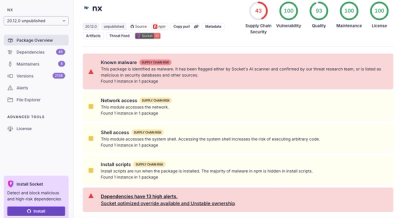This project has been renamed to a1 - Please switch to that crate which is available
on crates.io and
github




a1_notation
A library for parsing to and from A1 spreadsheet notation. A1 notation uses letters A-Z for
columns and a one-based number for the row. So for example at position (0, 0) of a spreadsheet
(the top left corner) is "A1". (1, 1) is "B2", (1, 0) is "B1", etc.
Features
For serde or rkyv support, you can enable
it with the respective features (either specify features = ["serde"] or features = ["rkyv"] in
your Cargo.toml).
Instantiating A1s
The most common need is to parse a string:
let a1 = A1::from_str("A1").unwrap();
assert_eq!(a1,
A1 {
sheet_name: None,
reference: RangeOrCell::Cell(Address {
column: Column { absolute: false, x: 0 },
row: Row { absolute: false, y: 0 },
}),
});
assert_eq!(&a1.to_string(), "A1");
let from_col_a_to_d = a1_notation::new("Foo!A:D").unwrap();
assert_eq!(from_col_a_to_d,
A1 {
sheet_name: Some("Foo".to_string()),
reference: RangeOrCell::ColumnRange {
from: Column { absolute: false, x: 0 },
to: Column { absolute: false, x: 3 },
},
});
assert_eq!(&from_col_a_to_d.to_string(), "Foo!A:D");
If you have zero-based coordinates and want to represent them as A1, there are several fns
for instantiating:
assert_eq!(&a1_notation::cell(2, 2).to_string(), "C3");
assert_eq!(&a1_notation::column(5).to_string(), "F:F");
assert_eq!(&a1_notation::row(5).to_string(), "6:6");
assert_eq!(&a1_notation::range((0, 0), (4, 4)).to_string(), "A1:E5");
Contains
Given all the various combinations or cells, ranges, row ranges, column ranges and
non-contiguous ranges you can calculate if one reference contains another.
let col_a = a1_notation::new("A:A").unwrap();
let a1 = a1_notation::new("A1").unwrap();
assert!(col_a.contains(&a1));
let top_5_rows = a1_notation::new("1:5").unwrap();
let b2 = a1_notation::new("B2").unwrap();
assert!(top_5_rows.contains(&b2));
let c3_to_j20 = a1_notation::new("C3:J20").unwrap();
let d5 = a1_notation::new("D5").unwrap();
assert!(c3_to_j20.contains(&d5));
Into/From/AsRef impls
As much as possible it implements Into/From and AsRef to convert between the various
structs. Generally you can go from more specific to less specific but not the other way
around. You typically should work with A1 structs but you can also use these traits to work
with these lower level ones and cast them upwards.
let a1 = Address::new(0, 0);
assert_eq!(&Column::new(0), a1.as_ref());
assert_eq!(&Row::new(0), a1.as_ref());
let col_b = Column::new(1);
assert_eq!(
RangeOrCell::ColumnRange {
from: Column::new(1),
to: Column::new(1),
},
col_b.into());
assert_eq!(
A1 {
sheet_name: None,
reference: RangeOrCell::ColumnRange {
from: Column::new(1),
to: Column::new(1),
},
},
col_b.into());
Shifting
You can move references (and ranges) around:
assert_eq!(
&a1_notation::cell(0, 0)
.shift_right(3)
.shift_down(2)
.shift_left(1)
.to_string(),
"C3");
Iterators
You can iterate through the various types of ranges.
assert_eq!(
a1_notation::cell(0, 0)
.iter().map(|r| r.to_string()).collect::<Vec<_>>(),
vec!["A1"]);
assert_eq!(
a1_notation::new("D:G").unwrap()
.iter().map(|r| r.to_string()).collect::<Vec<_>>(),
vec!["D:D", "E:E", "F:F", "G:G"]);
assert_eq!(
a1_notation::new("3:6").unwrap()
.iter().map(|r| r.to_string()).collect::<Vec<_>>(),
vec!["3:3", "4:4", "5:5", "6:6"]);
assert_eq!(
a1_notation::new("A1:C3").unwrap()
.iter().map(|r| r.to_string()).collect::<Vec<_>>(),
vec![
"A1", "B1", "C1",
"A2", "B2", "C2",
"A3", "B3", "C3",
]);
A1 Reference Examples
Here is a table illustrating A1 references:
"A1" | Cell A1 |
"A1:B5" | Cells A1 through B5 |
"C5:D9,G9:H16" | A multiple-area selection |
"A:A" | Column A |
"1:1" | Row 1 |
"A:C" | Columns A through C |
"1:5" | Rows 1 through 5 |
"1:1,3:3,8:8" | Rows 1, 3, and 8 |
"A:A,C:C,F:F" | Columns A, C, and F |
For more info take a look at the package on crates.io and it's Rust docs.
Additional Reading




